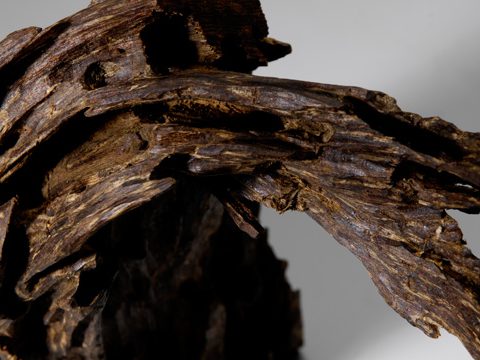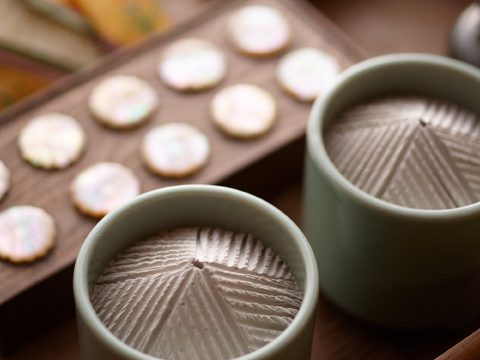Incense was brought to Japan from abroad in the early 6th century together with Buddhism. In Buddhism, incense smoke is thought to dispel evil and purify the altar. In the late 6th century, a fragrant wood (jin-kou) drifted ashore to Awaji Island and when the island’s inhabitants burned it as firewood, they noticed a wonderful fragrance. This is considered the origin of making incense in Japan.
From the 8th century, not only was incense used for religious purposes, but also to scent rooms and clothing. The concept of “enjoying fragrance” was born and became popular among the nobility.
As the aristocratic culture gave way to samurai culture with the times, the incense culture also developed. In the 15th century, the idea of “Kodo” spread along with “Sadou.” Kodo—in which fragrant wood is burned in a particular manner, and classic poems and literature are appreciated together with the fragrance—like Sadou, is an art that heavily engages literary arts and the mind. In Kodo, the act of smelling fragrance is phrased as “listening” to it.
The spirit of kodo is also closely linked to Zen. It is the source of important inspiration for us.
お香は、6世紀初頭に仏教の伝来とともに海外から日本に伝わりました。仏教において、お香の煙は邪気を払い、仏前を清めると考えられています。6世紀末には、淡路島に香木(沈香 jin-kou)が漂着し、島民が薪として燃やしたところ、不思議な香りを発見し、日本でのお香作りが始まったとされています。
8世紀頃から宗教的な用途以外にも、お香を部屋や衣類につけ、”香りを楽しむ”という概念が生まれ、貴族たちの間で親しまれるようになりました。
時代は貴族文化から武家文化に移行するとともに、お香の文化も発展を遂げ、15世紀には”茶道”と並び”香道”という思想文化が広まります。香道は、茶道と同じく、一定の作法のもとに香木を焚き、その香りと共に古典の詩や文学を鑑賞するという文学性、精神性の高い芸術です。香道では、香りを「嗅ぐ」とはいわず「聞く」と表現します。
香道の精神は禅とも密接に結びついています。それは私達にとって大切なインスピレーションの源です。



